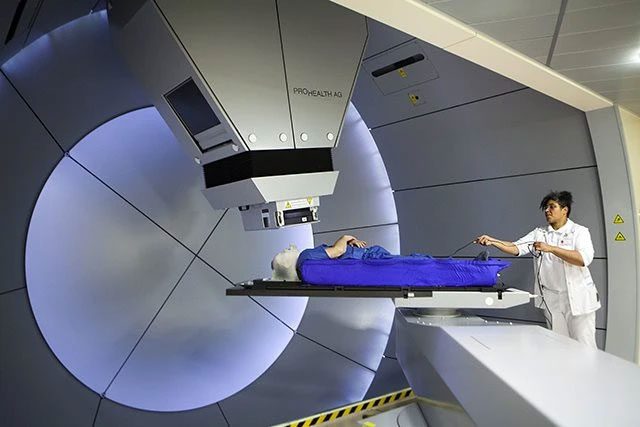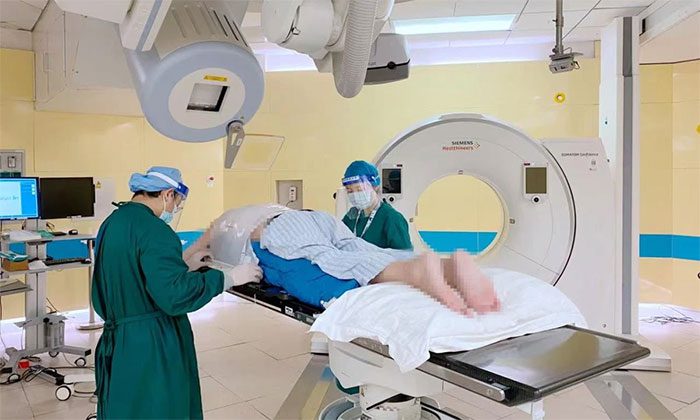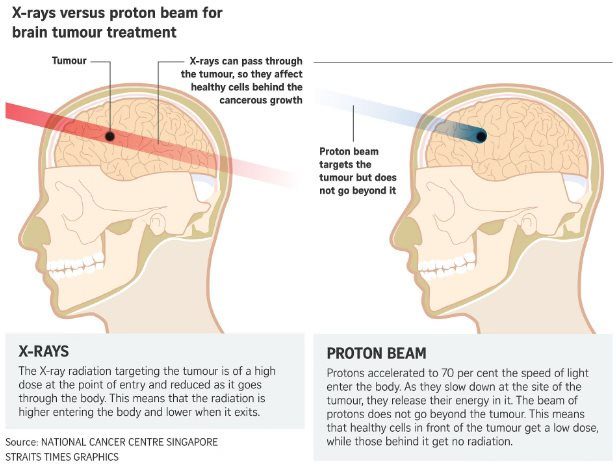After many years of using costly foreign machines, China has started utilizing domestically produced equipment.
High-Cost Machines
Proton therapy is one of the most advanced radiation cancer treatment methods in the world. It can directly target cancer cells without damaging the surrounding healthy tissues, boasting a very high accuracy rate.

Currently, each proton therapy machine costs between $80 million and $100 million.
Each proton therapy machine is known to cost between $80 million and $100 million. In Singapore, Mount Elizabeth Novena Hospital (MNH) has become the first healthcare facility in the country to receive permission to operate this expensive system. Two other organizations, the National Cancer Centre Singapore (NCCS) and the Singapore Advanced Medical Institute (SAM), are waiting for licenses to begin similar treatment methods.
Because it is a complex therapy requiring state-of-the-art machinery, the cost of treatment with this method is not cheap. It is reported that the average cost with European equipment amounts to about $60,000 to $70,000 for the entire treatment process per patient in Singapore.
In China, the Shanghai Proton and Heavy Ion Center imported radiation machines from Germany and charged about 300,000 RMB (approximately $40,000) for each treatment session.
However, recently, the first domestically produced proton machine has marked a significant breakthrough in the country’s medical technology. Although China has not disclosed the price of the domestically produced proton machine, the treatment cost for patients is only 40,000 RMB ($5,556) for the first treatment and 15,000 RMB ($2,000) for each subsequent treatment.

The first domestically produced proton machine in China helps reduce cancer treatment costs in the country.
As a result, the maximum cost for each treatment session is only 170,000 RMB ($23,000), nearly half the cost of similar treatment using imported machines and one-third of the treatment cost in other countries.
According to Shanghai Daily, as of the end of March, China’s first domestically produced proton therapy system had treated 100 patients, including 3 children and light cases at the northern branch of Shuyin Hospital.
The system began trial operations in July of last year and was officially approved for operation in November. Hospital officials stated that the 100th patient marked an important milestone in the ability to produce high-end medical equipment domestically, allowing Chinese patients to receive advanced radiation treatment at lower costs.
Dr. Chen Jiayi, head of the radiation department at Shuyin Hospital, stated: “Based on the domestically produced proton machine, we have developed our own clinical guidelines and refined medical practices, while also forming our own technical standards and guidelines, particularly targeting common cancers in Chinese patients.”
Among the 100 patients, there were 29 cases of head or neck cancer, 35 cases of breast cancer, 22 cases of chest cancer, 9 cases of abdominal or pelvic cancer, and 5 cases of spinal or limb cancer.
Dr. Chen mentioned: “Our clinical practice includes all parts of cancer treatment, and all patients have reported smooth treatment processes without side effects. Some patients have shown positive results.”
The medical costs for proton therapy are not covered by government health insurance but are paid for by commercial insurance and huhuibao, a type of supplemental private health insurance for residents of Shanghai.
Economic Barriers
Proton therapy equipment is one of the largest and most complex medical devices in the world today. The biggest barrier is the economic cost of research, development, and production. Previously, the market for proton therapy equipment in China could only be fulfilled by imports due to a lack of domestic products.
The high purchase price and maintenance costs of imported equipment resulted in high costs for treatment sessions. However, in 2022, the first domestically produced proton therapy equipment passed product scrutiny by the National Medical Products Administration of China and was authorized for use.
According to Straitstimes, although proton therapy is not better than conventional radiation therapy in terms of destroying cancer cells or shrinking tumors, it causes significantly less damage to surrounding healthy tissues and organs.

Comparison of beam paths in conventional radiation therapy and proton therapy.
The reason is that in proton therapy, the beam stops at the tumor site. In conventional radiation therapy, the beam that destroys cancer cells does not stop but continues through the body (like a bullet traveling), causing damage to other parts.
Radiation oncologist MNH Lee Kuo Ann explained: “Proton particles stop in the tumor and do not let normal tissues on the other side of the tumor be exposed to radiation.”
Therefore, this therapy will reduce side effects and alleviate growth and developmental issues in children and adolescents. Due to this superior effect, the cost of proton therapy is many times higher than conventional radiation therapy.


















































